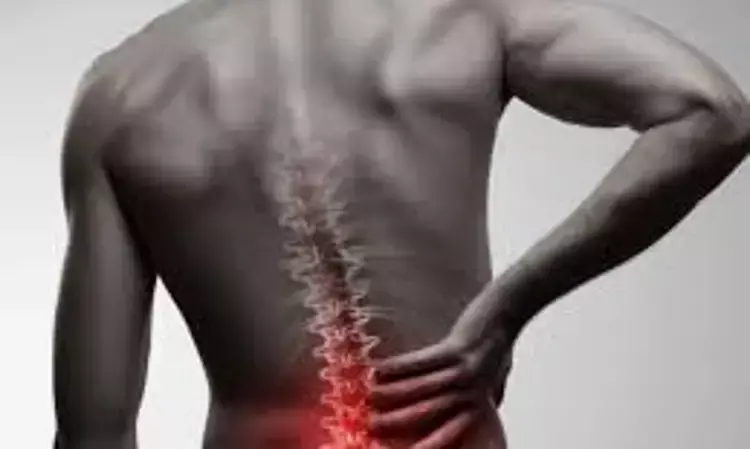- Home
- Medical news & Guidelines
- Anesthesiology
- Cardiology and CTVS
- Critical Care
- Dentistry
- Dermatology
- Diabetes and Endocrinology
- ENT
- Gastroenterology
- Medicine
- Nephrology
- Neurology
- Obstretics-Gynaecology
- Oncology
- Ophthalmology
- Orthopaedics
- Pediatrics-Neonatology
- Psychiatry
- Pulmonology
- Radiology
- Surgery
- Urology
- Laboratory Medicine
- Diet
- Nursing
- Paramedical
- Physiotherapy
- Health news
- Fact Check
- Bone Health Fact Check
- Brain Health Fact Check
- Cancer Related Fact Check
- Child Care Fact Check
- Dental and oral health fact check
- Diabetes and metabolic health fact check
- Diet and Nutrition Fact Check
- Eye and ENT Care Fact Check
- Fitness fact check
- Gut health fact check
- Heart health fact check
- Kidney health fact check
- Medical education fact check
- Men's health fact check
- Respiratory fact check
- Skin and hair care fact check
- Vaccine and Immunization fact check
- Women's health fact check
- AYUSH
- State News
- Andaman and Nicobar Islands
- Andhra Pradesh
- Arunachal Pradesh
- Assam
- Bihar
- Chandigarh
- Chattisgarh
- Dadra and Nagar Haveli
- Daman and Diu
- Delhi
- Goa
- Gujarat
- Haryana
- Himachal Pradesh
- Jammu & Kashmir
- Jharkhand
- Karnataka
- Kerala
- Ladakh
- Lakshadweep
- Madhya Pradesh
- Maharashtra
- Manipur
- Meghalaya
- Mizoram
- Nagaland
- Odisha
- Puducherry
- Punjab
- Rajasthan
- Sikkim
- Tamil Nadu
- Telangana
- Tripura
- Uttar Pradesh
- Uttrakhand
- West Bengal
- Medical Education
- Industry
Tibial Nerve SEP Shows Promise in detection of Lumbar Spinal Stenosis

Lumbar spinal stenosis (LSS) can cause debilitating back pain and nerve-related symptoms, it has been notoriously challenging to diagnose accurately. However, a recent study published in Clinical Neurophysiology Practice found a promising technique that utilizes somatosensory evoked potentials (SEPs) in the tibial nerve, offering new hope for LSS patients.
The retrospectively study focused on patients with MRI-confirmed LSS located at the cauda equina or conus/epiconus region and recorded the P15 and N21 potentials and identified specific abnormalities as diagnostic markers. Localizing abnormalities, including a normal P15 latency with either a prolonged P15-N21 interval or an absent N21, were found in 67% of patients, making this approach significantly more sensitive than traditional diagnostic methods.
Importantly, the newly discovered technique surpassed other diagnostic markers' sensitivities. While delayed P38 latency offered a sensitivity of just 28%, and N21 abnormalities provided 39%, the P15 and N21 potentials combined displayed a higher sensitivity that could potentially revolutionize LSS diagnosis.
Moreover, this method demonstrated its ability to identify LSS even in patients who did not present typical sensory symptoms or signs. The study discovered that localizing abnormalities were present in six out of eleven patients without these hallmark indicators, making it a valuable tool for early diagnosis.
The study also examined tibial nerve F-wave findings, a common diagnostic approach, and found that it was abnormal in 36% of patients. However, the localizing abnormalities in SEPs were detected in a higher percentage of the same patient population, further underlining the potential advantages of this new diagnostic method.
Additionally, the study found that the P15 amplitude was depressed in 22% of patients, which could indicate the involvement of the dorsal root ganglion in LSS, even though its latency remained normal for these individuals.
This innovative diagnostic technique, which uses tibial nerve SEPs with the recording of P15 and N21 potentials, promises a much-needed improvement in LSS diagnosis. It can precisely pinpoint the location of the lesion at the cauda equina or conus/epiconus level, enhancing the ability to target treatments effectively.
Reference:
Matsukura, K., Hokkoku, K., Mukai, T., Oishi, C., Kanbayashi, T., Takahashi, T., & Sonoo, M. (2023). Tibial nerve SEPs in diagnosing lumbar spinal stenosis: The utility of segmental evaluation using P15 and N21. In Clinical Neurophysiology Practice (Vol. 8, pp. 49–57). Elsevier BV. https://doi.org/10.1016/j.cnp.2023.03.001
Neuroscience Masters graduate
Jacinthlyn Sylvia, a Neuroscience Master's graduate from Chennai has worked extensively in deciphering the neurobiology of cognition and motor control in aging. She also has spread-out exposure to Neurosurgery from her Bachelor’s. She is currently involved in active Neuro-Oncology research. She is an upcoming neuroscientist with a fiery passion for writing. Her news cover at Medical Dialogues feature recent discoveries and updates from the healthcare and biomedical research fields. She can be reached at editorial@medicaldialogues.in
Dr Kamal Kant Kohli-MBBS, DTCD- a chest specialist with more than 30 years of practice and a flair for writing clinical articles, Dr Kamal Kant Kohli joined Medical Dialogues as a Chief Editor of Medical News. Besides writing articles, as an editor, he proofreads and verifies all the medical content published on Medical Dialogues including those coming from journals, studies,medical conferences,guidelines etc. Email: drkohli@medicaldialogues.in. Contact no. 011-43720751


